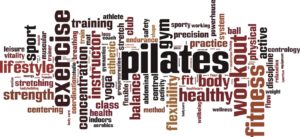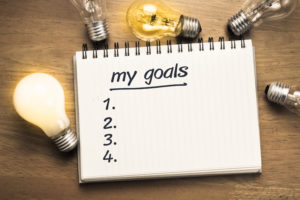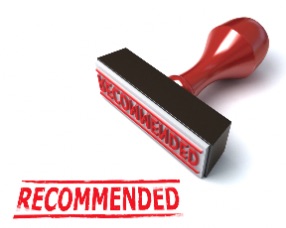Pilates, Pain and Progress
 Pilates, pain and progress - Jacqui has found an exercise regime to combat pain and improve strength
Pilates, pain and progress - Jacqui has found an exercise regime to combat pain and improve strength
I’m sure there are many people out there who, like me, have struggled or are struggling with exercise, physiotherapy and pain - along with other ‘helpful advice’ from numerous sources.
For full disclosure I should tell you that, in a past life, I was a medical doctor (now retired for medical reasons) so had some insight into the process, and should have also had access to the best people around.
But this story begins with me deciding that enough was enough of specialists, physios, et al who only saw fit to treat a specific part of my body. I was pretty conscientious at tackling the exercises I was given, whether for my shoulders or my back, but the end result just seemed to be additional pain and absolutely no gain. So I stopped everything, and the result was a definite reduction in pain. The next couple of years were spent learning to pace my life better and slowly reducing my pain meds as I could.
Making changes to adapt to my abilities
Over time it became clear that the house I had lived in for 10 years was really not suitable for my abilities and this was only going to get worse, so I started the Great House Hunt.
Two years ago, after years of searching and a prolonged sale, I moved 12 miles to a bungalow in Chester, but it could have been 100 miles, as the difference it made was huge. I am now much more connected with travel options and more local choice for everything, whether it’s shops, GPs, parks, restaurants, cafes, etc.
Less than 4 months after moving, and just as I was setting about arranging my new life, I discovered I had breast cancer. I must say the whole experience of diagnosis, surgery and subsequent treatment was the best I’ve ever known as a patient. It was such a far cry from the orthopaedic surgeons I’ve had to deal with throughout my life.
It was during this period, I was more aware that I was struggling with balance and general mobility as I was asked to do many things not usually in my day to day activities. After a minor fall, while I was kneeling down to reach a socket, I realised I needed to do something about this.
Advice from the Trust to find a suitable Pilates instructor
I’d heard a lot about Pilates, and had read Simone’s blogs, but it all seemed more than I could cope with, and I still had horrible memories of past attempts to improve. Looking at Pilates groups online did nothing to assuage those fears. But I took the advice from the TT and started to look for a Pilates instructor who was also a physiotherapist. Incredibly I found what I was looking for just over half a mile from my new house.
 My initial contact was by email and I shared my situation and goals, and was pointed in the direction of a specific physio/Pilates instructor who they felt would be good for me and my circumstances.
My initial contact was by email and I shared my situation and goals, and was pointed in the direction of a specific physio/Pilates instructor who they felt would be good for me and my circumstances.
I had an initial appointment where I had a full assessment, agreed goals and created a plan of action, knowing that if we pushed too hard, my pain would get dramatically worse.
She formulated a very simple program of exercises, omitting several that would have been included in a group session, and modifying others to suit my body’s abilities (or lack thereof).
Feeling the benefit of an exercise plan with regular reviews
Initially I had a couple of weekly reviews and she had to correct many ‘adaptations’ I had made. It just comes naturally to take the easy/short route in life tasks, but this was an area in which I was being challenged. I had a very poor idea of posture and which muscles I was using for what (especially as our muscles are not the anatomical norm, and some of us have a poor joint position sense). I now have a monthly review for her to make more corrections or add more challenging exercises.
Making exercise the daily priority achieves the best results
Again, I was pretty determined to do the best I could. I knew that the only way this was going to benefit me was if I prioritised the exercise program. This meant allowing it to eat into the best part of my day - the morning - when I’m usually at my most alert, and able to do chores and other tasks. I admit that I was motivated by a degree of fear as I live alone and am fearful of falling, and that helped me to be consistent.
After many weeks, there were definite signs of improvement. Core muscles identified, gluteal muscles awakened…a real pain in the backside…and a growing sense of which muscles I’m using for what. It seems that just as I think I’ve perfected a level 1 exercise, I become aware of a little cheat that I’d let slip in and so would just patiently slow down and start the exercise again. But the joy of succeeding even in these little things is wonderful.
I have also become so much more aware of how using my shoulders is a major cause of my back pain and am now beginning to change the way I do things to try to maximise function and minimise pain, but it’s a long road.
Modifying my exercise plan to cope with lockdown
After 14 months, as my self-imposed lockdown began, I was still mainly on level 1s and 2s, with some 3s. Because of the extra self-care and house cleaning that is now needed as I’m in isolation, I have modified my daily regime so as not to lose the progress I’ve made.
The best thing for me is that I’ve been able to do this without my body hitting back with unmanageable increased pain and I believe this is due to finding a sensible instructor who listened to me and happily adapted the program to suit. She never questioned my pain or limitations but accepted it and worked with it and around it, all to ensure I could continue with the program.
An individual Pilates exercise plan is definitely recommended
 Do I recommend we all do this, YES! It might not make a huge difference to my mobility but it is definitely helping my core strength and balance. Both of these will really benefit us all as we get older and more bits of our bodies give up.
Do I recommend we all do this, YES! It might not make a huge difference to my mobility but it is definitely helping my core strength and balance. Both of these will really benefit us all as we get older and more bits of our bodies give up.
And if you need further encouragement, there’s no sweat or heavy exercise machinery involved… I’m able to do many of my exercises while lying on my bed or using a wall (I initially tried lying on a mat on the floor but struggled with getting up and down which put me off doing the program of exercises) and I still get some feedback from my mattress. The only purchases I have made is a soft gym ball and Theraband resistance bands.
So, I hope this will encourage those of you who have constant pain, chronic pain, balance issues and hate the idea of sweat bands, exercise machines and jogging suits.
